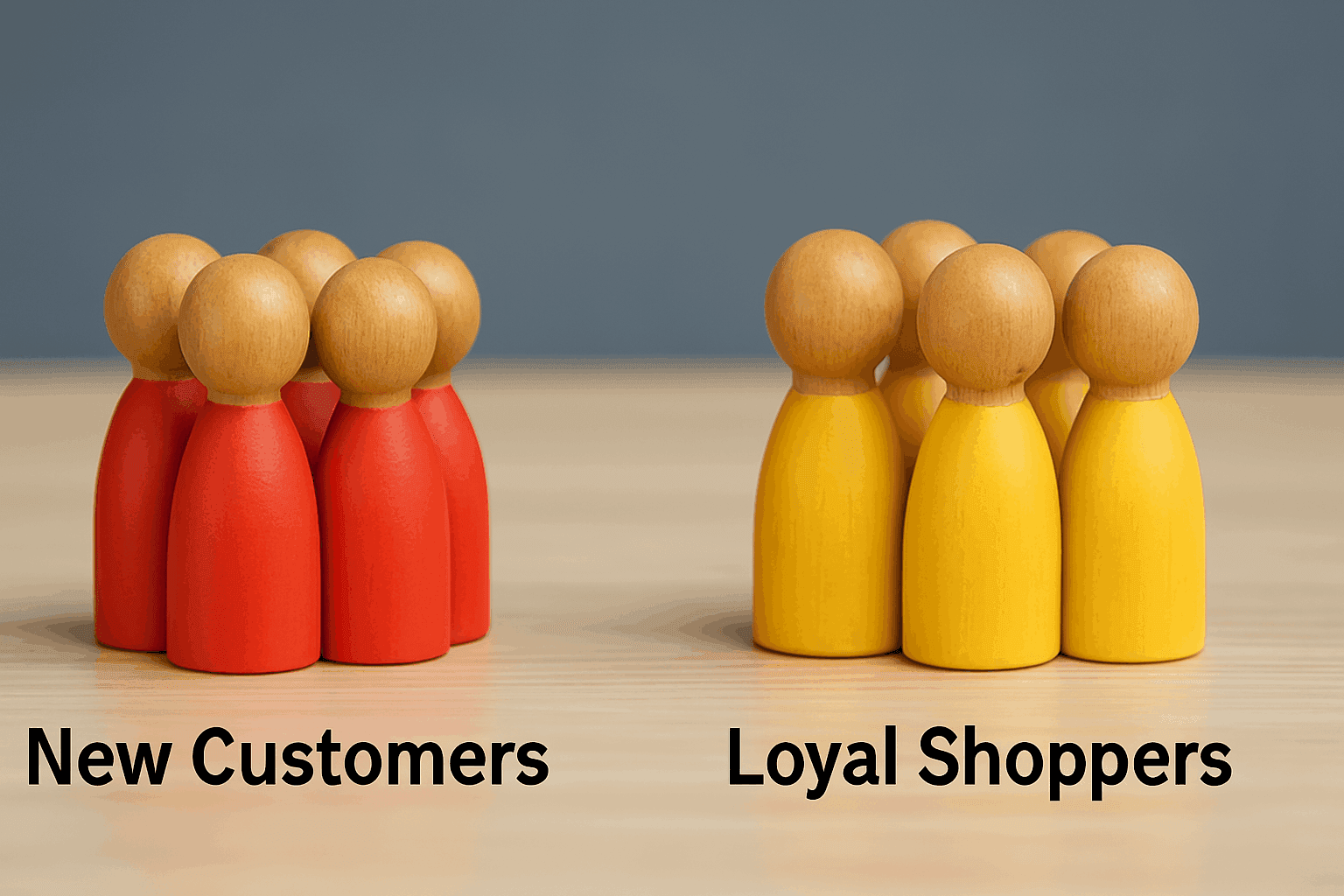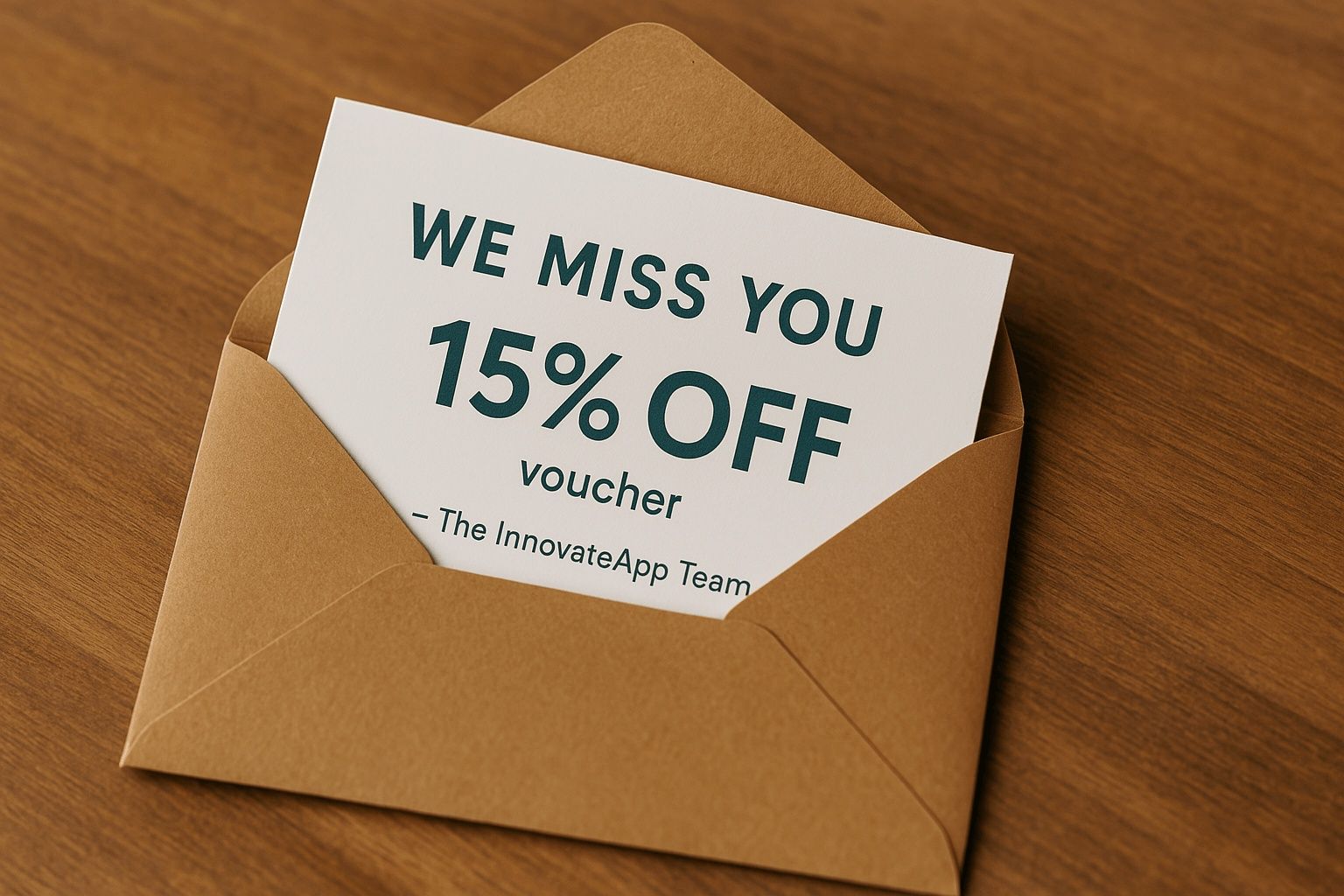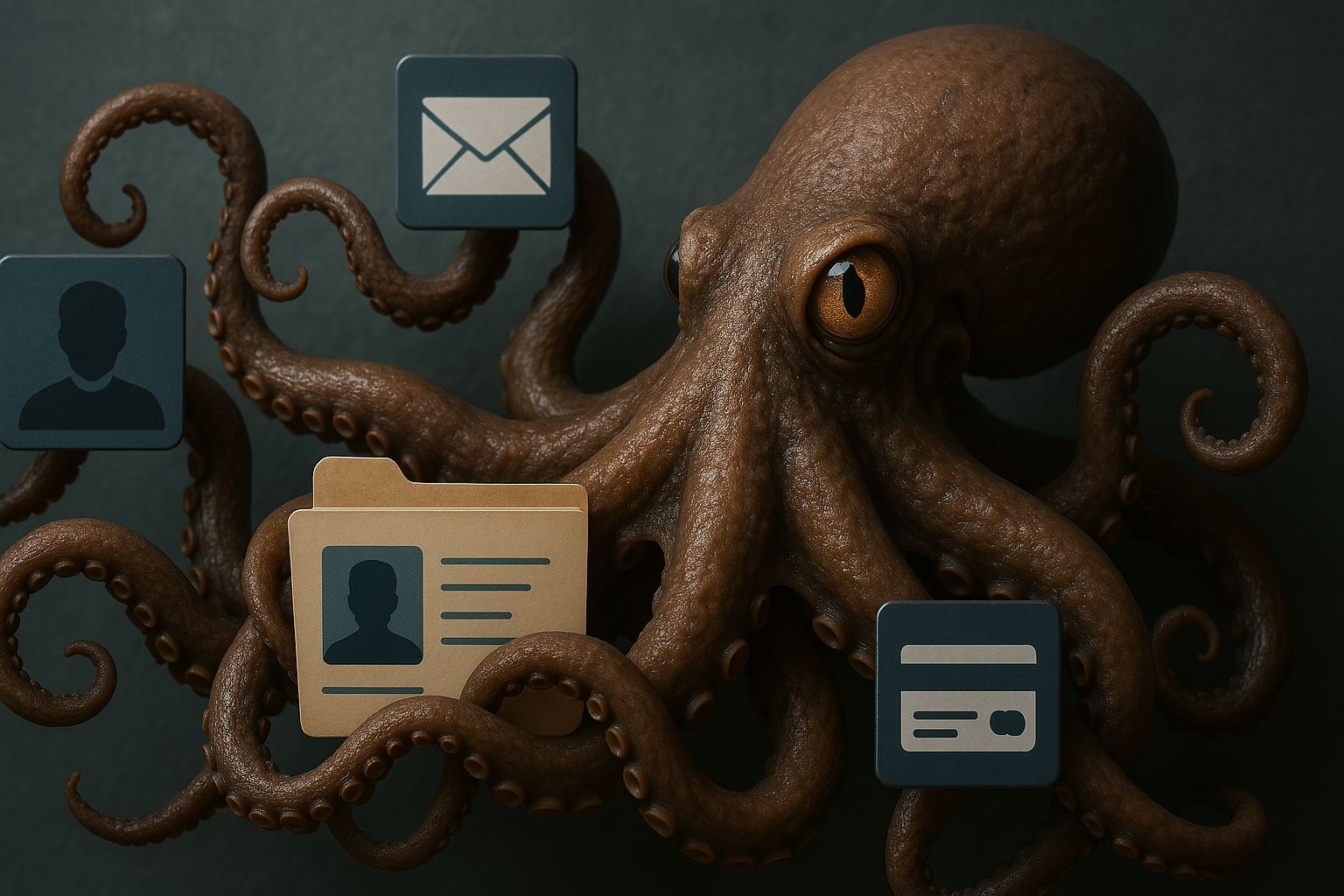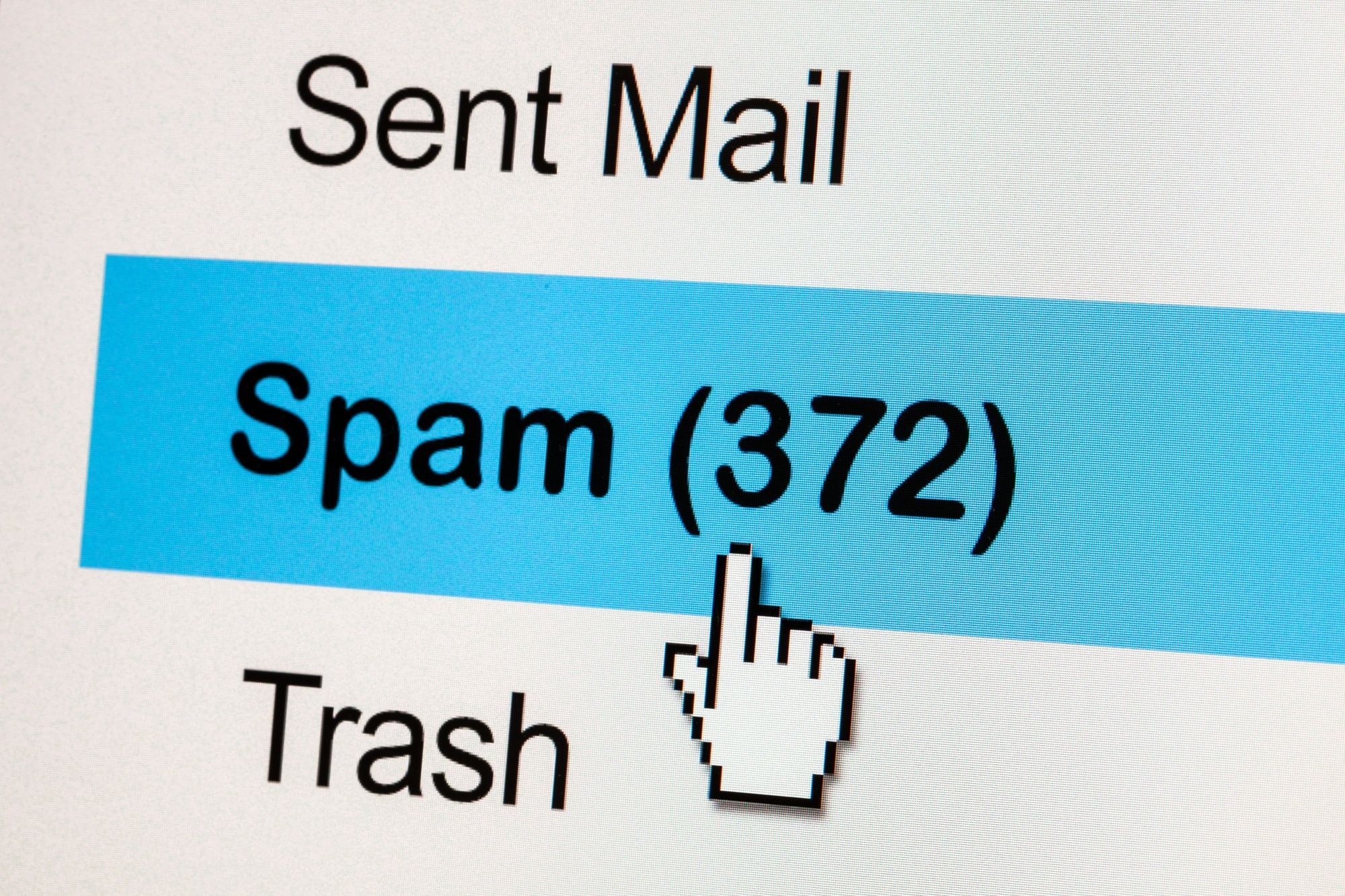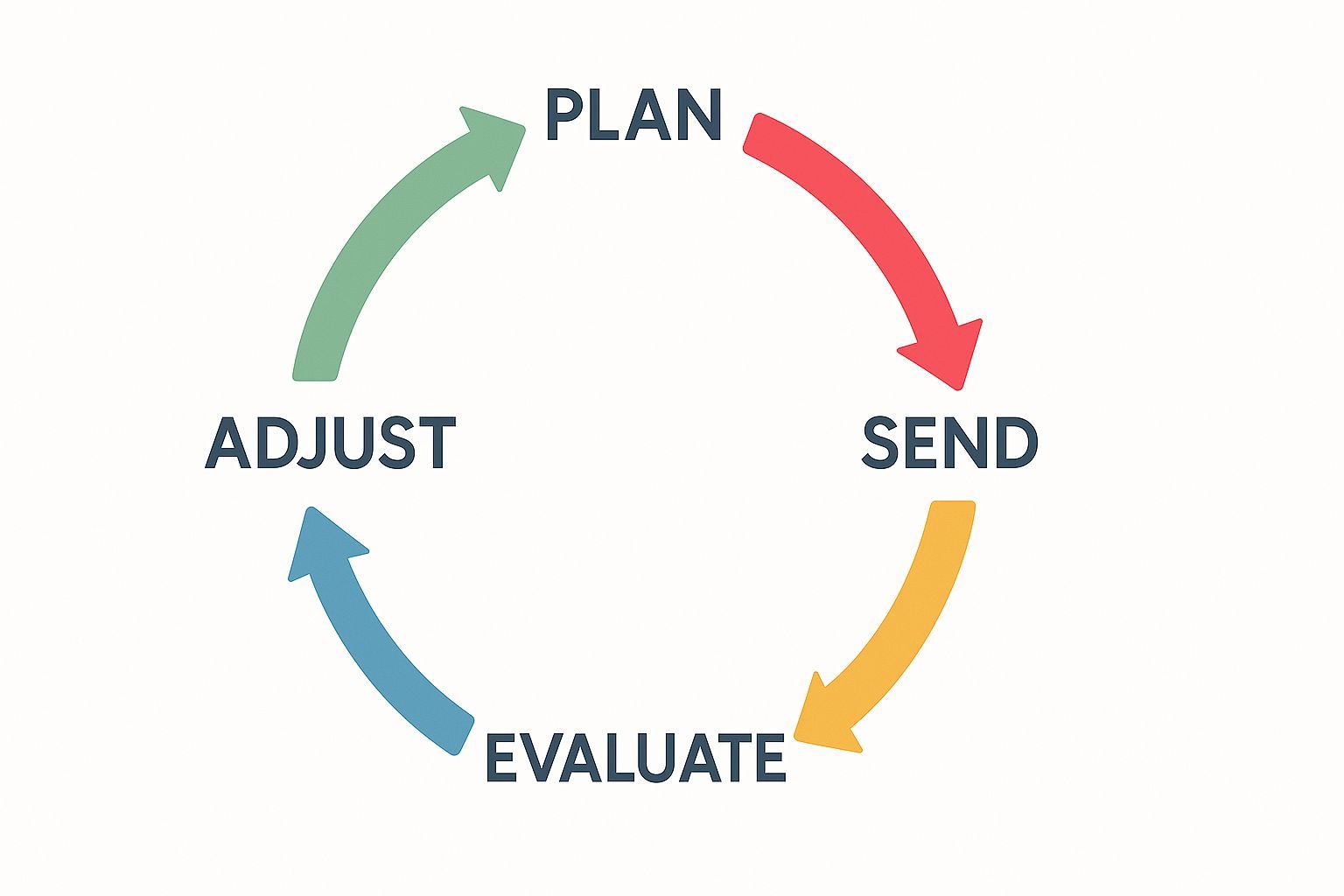Contents
the email tool that makes email marketing simple
How Targeted Email Marketing Makes Messages Feel Personal
Published: April 2, 2025
We’ve all received emails that instantly feel like spam—promotions we never asked for, products that don’t match our interests, or random messages cluttering our inboxes.
These emails usually go straight into the trash.
Targeted email marketing is exactly the opposite. It focuses on sending emails your subscribers care about. You do this by grouping your audience into smaller segments based on their interests, behaviors, or backgrounds and then crafting messages that feel personal and relevant.
Let's say you love hiking. An email lands in your inbox offering a discount on hiking boots or a guide to nearby trails. You’re much more likely to open and engage with that email because it speaks directly to you. This thoughtful targeting creates interest, builds trust, encourages subscribers to interact more, and helps create lasting relationships.
Simply put, targeted emails have higher open rates. People click more frequently, buy more often, and unsubscribe less. Why? Because subscribers appreciate being understood. When they feel genuinely valued, they trust your brand and stay connected for longer.
Whether you're a small business or a large company, targeted email marketing deserves your attention. The emphasis isn't on broadcasting messages but on building genuine relationships.
In this article, you'll learn exactly what targeted email marketing involves, including how to understand your subscribers, personalize your messages effectively, and set up automated email flows that subscribers truly value. You’ll also see real-world examples and discover common mistakes to avoid.
Let’s unravel the details.
Untargeted vs. Targeted Approaches
Generic Emails
Generic emails are easy to spot—they’re the ones that feel like they were sent to everyone on the planet. Fifty times. Sure, they might include your name, but that's usually where the personalized experience ends. Often, these emails promote products you've never shown any interest in or announce sales that seem completely irrelevant, leaving you to wonder if the sender has any idea who you are or if the email was sent to the wrong inbox.
Why is this a problem? Because generic emails feel impersonal and disconnected.
A strong email marketing strategy prioritizes relevance because when messages don’t speak to the target audience’s individual needs or preferences, subscribers quickly lose interest. Consequently, these emails see lower open rates and lower engagement. Worse yet, irrelevant messages annoy subscribers, prompting them to unsubscribe or mark your emails as spam.
Relying on generic emails wastes your marketing budget and can actively harm your brand’s reputation, weakening trust with your target audience and damaging your relationship with subscribers.
Targeted Emails
Targeted emails feel personal—almost like having a genuine conversation. Instead of sending the same message to everyone, an email campaign can be more effective when you split your subscribers into smaller groups based on their interests, location, previous purchases, or how they've interacted with your website. This segmentation is one of the major benefits of targeted email marketing, ensuring that each recipient gets content tailored to their specific needs.
Then, you craft unique messages specifically for each group instead of using a generic email template. For instance, subscribers who previously bought gardening tools might receive emails about seasonal planting tips or exclusive discounts on high-quality seeds. Those interested in fashion would receive updates about the latest seasonal trends or exclusive promotions tailored to their tastes. Because these emails directly match subscribers' interests, they feel relevant and valuable, prompting higher engagement.
When your subscribers consistently receive messages aligned with their interests, they feel recognized and valued. This builds trust over time and strengthens their connection with your brand. Rather than ignoring your messages, subscribers look forward to receiving them and become loyal, engaged customers.
Basically, targeted emails cultivate meaningful relationships, boost engagement, and deliver significantly better results—making the benefits of targeted email marketing undeniable.
Key Building Blocks of Targeted Email Marketing
Data and Segmentation
Effective targeting starts with understanding your subscribers. If you want to send emails that people even care about, you need good data—always collected in ways that respect their privacy.
You'll usually collect three types of data:
-
Demographic data includes basic details like age, location, job title, or income. This helps you broadly group subscribers—for example, distinguishing professionals from students or local shoppers from those further away.
-
Behavioral data tells you how subscribers interact with your brand—what pages they visit, what products they buy, and which emails they open or links they click. This data reveals real interests based on actual actions, not just stated preferences.
-
Psychographic data goes deeper, focusing on subscribers' interests, values, or lifestyles. You typically gather this through surveys or signup forms. It helps you create messages that resonate emotionally, going beyond simple demographics.
After collecting this information, organize it. Use simple labels or tags like "new subscriber," "frequent buyer," or "inactive user." Avoid complicated systems—simplicity makes segments easier to use.
Start broadly. Create segments such as "new customers" or "loyal shoppers" first. Then, watch how each segment interacts with your emails. If you notice a segment showing distinct behaviors, break it down further. For example, divide "loyal shoppers" into "monthly buyers," "holiday shoppers," or "occasional customers."
Don't segment too narrowly right away. Small groups—fewer than 20 subscribers—can quickly become difficult to manage and might not justify the extra work. So, begin broadly, then gradually refine based on subscriber behavior.
Read More
Data Segmentation: The Ultimate Guide (DemandScience)
Personalization
Personalization isn't just saying, "Hi, {{First Name}}." That's only scratching the surface. True personalization goes much deeper—it involves mentioning past purchases, highlighting specific interests, or acknowledging how subscribers previously interacted with your brand as part of your email marketing strategy.
A personalized email centers on creating a message tailored to them based on subscribers' behavior and preferences, making them feel understood and valued. To make an impact, you need to send targeted emails that speak directly to each subscriber's needs.
Why does this matter? Because meaningful personalization feels genuine. For example, if a subscriber has shown interest in eco-friendly products, sending them a personalized email about sustainable living tips or a new line of eco-conscious products will resonate with their values and interests, increasing engagement and the likelihood of purchase.
This approach is an essential part of your email marketing strategy, as it strengthens the connection with your target audience. By carefully selecting which products or messages to share, you create targeted content that aligns with their preferences.
However, be cautious—always ensure your data is accurate and up-to-date. It wouldn't work well to send an email to a subscriber who had recently moved to a new city, but your email still recommends local events or stores from their old neighborhood. This would be irrelevant and could make them feel that you don’t fully understand their current situation, leading to irritation and potential unsubscribing.
Want to take personalization even further? Try advanced options like AI-driven product recommendations, automated suggestions based on browsing behavior, or dynamic content that changes depending on who's opening the email. For example, you could use AI to automatically suggest products similar to items a subscriber has previously viewed or purchased. This approach is especially powerful if you're managing a large subscriber list—it boosts relevance dramatically without adding tons of manual effort, helping you target your audience with precision and ensuring you personalize your email for maximum engagement.
Read More
What is personalization? (McKinsey)
Automation and Timing
Email automation helps you send personalized messages at exactly the right moment—without lifting a finger. These automated emails are triggered by specific actions subscribers take, like signing up, abandoning a cart, or not logging in for a while. This makes them different from manual emails, such as newsletters or seasonal promotions, which you send to everyone at once. By leveraging automation, you can create targeted emails that feel relevant and timely, increasing engagement and conversions.
Some great ways to use automated emails include:
-
Welcoming new subscribers and helping them get started smoothly
-
Sharing helpful tips based on how they're using your product
-
Re-engaging subscribers who’ve stopped interacting with your emails
-
Suggesting complementary products based on recent purchases (upselling or cross-selling)
However, timing matters—a lot. Even the best automated emails can become annoying if you send them too frequently or at awkward times. Ensure your automated messages are spaced thoughtfully so subscribers don't feel bombarded. Keep them relevant, timely, and genuinely useful, and subscribers will start looking forward to your emails instead of ignoring them.
Creating a Targeted Email Strategy
Set Goals First
Before sending a single email, set goals. These will help you understand exactly what you're trying to achieve. Without them, you're just guessing and hoping something works.
Choose metrics that align with your goals. For example, if your goal is brand awareness, track open rates to see if subscribers are noticing your messages. However, if you're aiming for sales or clicks on your product or service, focus instead on click-through and conversion rates.
Goals typically fit into three main categories:
-
Acquisition: Encouraging new subscribers to make their first purchase, sign up for a trial, or request a demo
-
Retention: Keeping existing customers engaged, reducing cancellations, or bringing back inactive subscribers
-
Expansion: Getting current customers to upgrade their accounts, buy more frequently, or explore other products you offer
Using customer data effectively allows you to tailor emails to each segment, ensuring they receive relevant content that resonates with their needs. By deciding your goals first, you'll know who to target, what kind of emails to send, and how you'll measure your progress. Having specific objectives keeps your email strategy focused, ensuring each email you send brings you closer to the results you desire.
Define Your Initial Segments
You don’t need dozens of segments right away—start with a few simple groups:
-
New vs. existing customers: Welcome emails should differ from loyalty rewards or upsell offers.
-
Location or broad interests: Send local event invitations or product recommendations tailored to subscribers’ general interests.
Tie these initial segments directly to your goals. If your priority is getting new customers, focus heavily on new subscribers. If retaining current customers is more important, pay attention to inactive or at-risk subscribers.
Over time, you'll learn more about your subscribers by watching their behavior, using surveys, or analyzing product usage. As you gain insights, you can segment your audience into more refined groups, such as “frequent buyers,” “seasonal shoppers,” or “dormant users,” ensuring each email feels relevant and drives stronger email engagement.
Start small, keep it clear, and expand gradually. Just ensure that every segment connects directly back to your main goals, so every email you send has a clear purpose and impact.
Read More
Essential Strategies for Effective Targetred Email Marketing (Mystrika Blog)
Planning Bulk Emails and Automated Flows
Planning your emails ahead of time makes your job easier and ensures every subscriber gets relevant messages. Think of it as creating an email roadmap—guiding different subscribers toward meaningful interactions with your brand.
Sending Bulk Emails Manually
Create tailored messages for each subscriber group rather than sending the same email to everyone. For example:
-
Frequent buyers: Send exclusive previews, early access sales, or quick thank-you notes.
-
Occasional shoppers: Showcase best-selling items, special discounts, or inspiring customer stories to encourage repeat purchases.
Personalizing your bulk emails this way transforms them into engaging conversations rather than generic broadcasts.
Example of a Targeted Bulk Email
Subject: Eco-Friendly Finds for Your Next Adventure!
Preview text: Hey {{first_name}}, check out these sustainable hiking essentials we think you'll love …
Email content:
Hi {{first_name}},
We noticed you're passionate about sustainability, so we've gathered some eco-friendly gear perfect for your next hike. Discover durable boots and stylish backpacks made from recycled materials—so you can enjoy the outdoors while protecting it too.
Explore Sustainable Gear →
Happy hiking,
— The Green Trails Team
By writing emails like this, you'll create messages subscribers look forward to reading.
Automated Emails Sent by Subscriber Actions
Marketing automation makes it easy to send the right message at the right time without manual effort. Automated emails trigger whenever subscribers take specific actions—like signing up or leaving a cart behind. Think of these as friendly assistants, ready to help at the right moment, with no extra effort from you.
Welcome Emails for New Subscribers
Trigger: Someone signs up for your emails.
Start with a warm welcome message explaining what they’ll receive and how often. A couple of days later, follow up with something useful, such as tips to get started. Finally, encourage their first purchase by offering a small discount or highlighting a popular product.
Abandoned Cart Emails
Trigger: A subscriber leaves items in their cart without buying.
Send a gentle reminder after 24 hours, encouraging them to finish checking out. After 48 hours, sweeten the deal with a small discount or free shipping. At 72 hours, create urgency ("Only two items left!") or include a positive review to give them an extra nudge.
Re-engagement Emails for Inactive Subscribers
Trigger: Subscriber hasn't opened your emails in weeks or months.
Start with a friendly “We miss you!” email to remind them of their value. If that doesn't work, send something special—like a discount or exclusive content—to bring them back. If they're still unresponsive after several attempts, remove them from your main list to protect your email health.
Example of a Re-engagement Email
Subject: We Miss You—See What's New!
Preview text: Hey, Adam. It’s been a while! Here’s a little something special for you …
Email content:
Hi Adam,
It's been a while since we last saw you! We’ve recently launched some exciting new features we think you’ll really like. As a thank-you for being part of our community, here’s 15% off your next visit.
See What's New →
Hope to see you soon,
— The InnovateApp Team
Putting It All Together
When you combine thoughtful bulk emails with targeted automated messages, subscribers feel understood, appreciated, and supported at every step. From first-time buyers to long-time loyalists, every email you send will strengthen your relationship, leading to happier customers and better results.
Tips for Creating Effective Email Content
No matter how carefully you plan your campaigns or automated emails, the real success comes down to connecting with subscribers as people. Keep the following principles in mind:
Write Like You’re Talking to a Friend
Use everyday language and a friendly tone. Emails should feel natural and conversational, making subscribers comfortable and more likely to engage.
Personalize Without Overdoing It
Mention previous purchases or interests to make emails relevant, but do it naturally. Subscribers should feel valued—not like you're watching their every move. You don't want to come across as a stalker! For example, instead of saying, "We noticed you spent exactly 17 minutes looking at our ceramic teapots," try a more natural approach like, "Tea lovers like you are raving about our latest handcrafted teapots—thought you might enjoy a peek!" This keeps the email relevant without feeling intrusive.
Clearly Guide Subscribers to the Next Step
If you're offering a discount, suggesting a new product, or inviting subscribers to schedule a demo, make it obvious what to do next. Clear buttons or links are essential—never leave subscribers guessing. When you make your email easy to navigate and action-oriented, you're more likely to drive conversions and engagement.
Focus on Simple, Smart Design
-
Keep layouts clean and uncluttered: Readers should instantly know what you want them to do.
-
Use consistent branding: Stick to your brand’s colors, fonts, and overall style so emails feel familiar.
-
Design for mobile first: Most subscribers read emails on their phones, so make sure your emails look great on small screens.
-
Create a clear visual hierarchy: Use headings, subheadings, and bold text to help subscribers quickly find the important information.
Most importantly, always remember that your subscribers are real people. Communicate warmly, respectfully, and genuinely. When emails feel clear, relevant, and personal, you build lasting trust and deeper relationships.
Watch More
How to Write Emails SO GOOD They Can't Ignore You in 2025 (Youtube Video)
Pitfalls to Avoid
Overdoing Personalization or Data Creep
Everyone appreciates emails that feel personal, but there’s a thin line between friendly and creepy. If your emails include details subscribers don't remember sharing, they'll feel uneasy instead of understood.
With targeted marketing, stick to the kind of information subscribers naturally expect you to have, like recent purchases or pages they've visited on your site. Don't dig deeper into their personal lives than necessary. Your emails should always feel helpful, friendly, and relevant, never intrusive.
Outdated Segments and Automations
Subscriber interests and behaviors rapidly evolve. The segments or automations you created months ago can quickly become outdated. Sending emails promoting products subscribers have already purchased doesn’t just irritate them—it can also make your brand appear careless.
Regularly review and update your segments and automated flows based on current subscriber activity or new insights to keep your targeted campaigns fresh. Keeping your targeting updated ensures your emails remain timely, relevant, and respectful of your subscribers' inboxes.
Ignoring Email Deliverability and Compliance
Great email content means nothing if your messages don't land in subscribers' inboxes. Using outdated or unverified lists can hurt your sender reputation, sending your emails straight into spam—or worse, landing you in legal trouble.
Always follow anti-spam laws and best practices. Regularly clean your email lists by removing inactive or unengaged subscribers. Make sure unsubscribe links are obvious and easy to find. Good email compliance protects your reputation and ensures your messages consistently reach your subscribers.
Sending Too Many Emails
Sending more emails doesn’t automatically mean better results. Emailing subscribers too frequently can quickly lead to inbox fatigue or irritation. When people feel overwhelmed, they either unsubscribe or simply stop opening your messages.
Set limits on how often subscribers receive emails from you. Use frequency caps to prevent subscribers from receiving multiple emails in a short period, and carefully plan automated flows so they don't overlap. A thoughtful, balanced schedule respects your subscribers' inboxes, keeps engagement high, and ensures people look forward to hearing from you.
Measuring and Optimizing Your Emails
Successful email marketing depends on understanding what's working and what's not. Tracking key metrics helps you pinpoint where your emails perform well and where there's room to improve.
Engagement
Your email's performance starts with two main metrics: open rate and click rate.
If your open rate is low (below 10%), subscribers aren’t finding your subject lines interesting enough. Experiment with shorter, clearer subjects or try adding personalization, questions, or urgency. If you're between 10% and 25%, you're on the right track—keep testing new ideas to push that higher. Above 25%? You’re doing great. Note what works best and apply those lessons to future emails.
Click rates reflect how engaging your email content is. A click rate under 1% means your content or call-to-action isn't compelling enough. Make sure your message is clear, concise, and focused on a single clear action. An average click rate (1-5 %) means your content resonates, but there's still room to test and improve. Above 5%? Fantastic! Pay close attention to what made that email successful and replicate it going forward.
Conversion
Conversions measure if subscribers do what you intended—such as buying, signing up, or downloading. To track conversions accurately, use tracking links and analytics tools like Google Analytics to see exactly what happens after the click. An email marketing tool can also help you streamline this process by providing built-in analytics to track both engagement and conversion metrics in real time.
If conversions are low (under 2%), subscribers click but don't follow through. That usually means your offer isn't clear enough or there's a disconnect between your email and the landing page. Simplify your offer, clarify your landing page, and ensure your email and landing page match closely in look and messaging.
A conversion rate between 2% and 5% is solid, but you can still improve. Streamline your signup or checkout process and add trust signals like customer reviews or security badges on your landing page.
A conversion rate above 5% indicates great performance. Study these high-performing emails carefully so you can replicate that success.
Unsubscribes and Spam Complaints
High unsubscribe or spam complaint rates can severely damage your email deliverability and brand reputation. Good unsubscribe rates stay below 0.5% per email sent, and spam complaints should ideally be under 0.1% (less than 1 complaint per 1000 emails).
If these numbers rise, act quickly! High unsubscribe or spam complaint rates often mean your subscribers find your emails irrelevant, too frequent, or intrusive. Pause campaigns that trigger high complaints, reassess your targeting, refine segments, and reduce how often you email until the numbers improve.
Return on Investment (ROI)
ROI measures whether your email marketing efforts generate more value than they cost. To calculate ROI, use this formula:
ROI = (Revenue from Emails – Email Costs) ÷ Email Costs × 100%
If your ROI is negative or below 100%, you're losing money or barely breaking even. Focus on improving your targeting, reducing costs, or clarifying your offers. An ROI between 100–400% means your emails are profitable; keep optimizing to push it even higher. An ROI above 400% is excellent—use these emails as benchmarks to guide your future strategy.
Watch More
How to Optimize Your Emails for Maximum Deliverability (Youtube Video)
Testing and Continuous Improvement
Great email marketers never rely on guesswork—they regularly test and use real data to improve. Instead of changing multiple things at once, each test should focus on one specific aspect, like subject lines, email length, call-to-action wording, or subscriber segments.
When testing subject lines, send two slightly different versions to see which performs better. For example:
-
Good subject lines tell readers why they should open the email:
Sam, ready for your next hike?
3 Tips for Better Hiking Gear -
Weak subject lines are vague, overly promotional, or unclear:
Great Deals Inside!
Limited-time offer, don't miss out!
If you're testing email length, send one shorter version (50–150 words, great for quick offers) and one longer version (300+ words, suitable for stories or guides). Evaluate which one gets better clicks or conversions, then apply that knowledge to your next emails.
Testing Group Size
Each test group should have at least 500 subscribers to provide reliable data. If your list is smaller—under 500 or even under 100 subscribers—you can still test! Just keep in mind that your results might be less definitive. With small lists, test bigger, clearer changes rather than subtle variations. For example, test completely different types of subject lines (personalized vs. curiosity-driven) instead of minor wording differences.
No matter your list size, always follow a simple testing cycle: plan, send, evaluate, and adjust.
- Plan your email based on previous insights.
- Send it, then watch your key metrics closely—opens, clicks, conversions, and unsubscribes.
- Evaluate quickly—if opens are high but clicks are low, your subject line worked but your content needs work.
- Adjust accordingly—simplify your offer, clarify your CTA, or improve your targeting.
By consistently repeating this cycle, each email you send will become smarter and more effective.
Wrapping Up
Targeted email marketing centers on staying relevant. Whether you're sending bulk campaigns or automated emails, each subscriber should feel like you're speaking directly to them.
Good targeting starts with quality data. Keep subscriber information accurate, clearly organized, and updated regularly. Use your data responsibly—stay helpful and personal without becoming intrusive or creepy.
Aim for genuine personalization that goes beyond superficial touches. Find a comfortable balance between deeper personalization and what you can realistically maintain, even as your subscriber list grows.
Automated emails help you deliver the right message at exactly the best moment, but regularly review your automation flows. Check for outdated content, overlapping messages, or old logic, and keep your automations fresh and relevant.
Don't feel pressured to perfect everything immediately. Start simple: maybe just one or two clear segments or a basic welcome automation. Watch your results closely. Once you see success, gradually expand and refine your segments and add complexity. The key is steady improvement.
An email marketing platform like Maildroppa can simplify segmentation and automation, but no tool can replace thoughtful strategy and quality content. Invest your effort in clear messaging, meaningful segments, and good timing—your subscribers will appreciate it.
Now it's your turn.
Take these practical principles and put them into action. Keep improving, and you’ll build stronger relationships, boost engagement, and achieve great results with targeted emails. If you want to see how to streamline your efforts and convert more subscribers automatically, check out Maildroppa’s Email Automations and discover how simple hands-free marketing can be.


